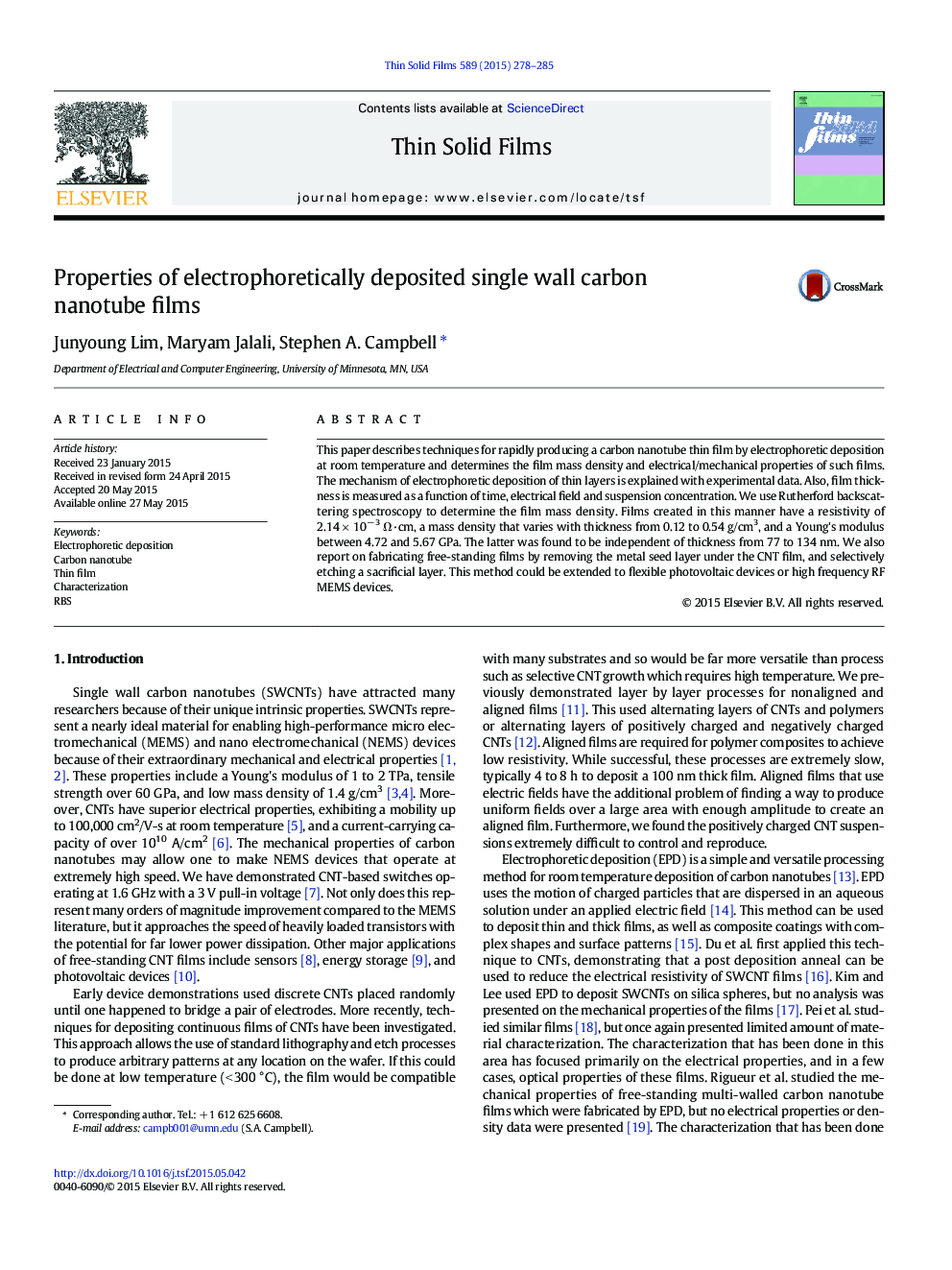| Article ID | Journal | Published Year | Pages | File Type |
|---|---|---|---|---|
| 1664610 | Thin Solid Films | 2015 | 8 Pages |
•We explain the electrophoretic deposition process and mechanism of thin SWCNT film deposition.•Characterization of the SWCNT film properties including density, resistivity, transmittance, and Young's modulus.•The film density and resistivity are found to be a function of the film thickness.•Techniques developed to create free standing layers of SW-CNTs for flexible electronics and mechanical actuators.
This paper describes techniques for rapidly producing a carbon nanotube thin film by electrophoretic deposition at room temperature and determines the film mass density and electrical/mechanical properties of such films. The mechanism of electrophoretic deposition of thin layers is explained with experimental data. Also, film thickness is measured as a function of time, electrical field and suspension concentration. We use Rutherford backscattering spectroscopy to determine the film mass density. Films created in this manner have a resistivity of 2.14 × 10− 3 Ω·cm, a mass density that varies with thickness from 0.12 to 0.54 g/cm3, and a Young's modulus between 4.72 and 5.67 GPa. The latter was found to be independent of thickness from 77 to 134 nm. We also report on fabricating free-standing films by removing the metal seed layer under the CNT film, and selectively etching a sacrificial layer. This method could be extended to flexible photovoltaic devices or high frequency RF MEMS devices.
